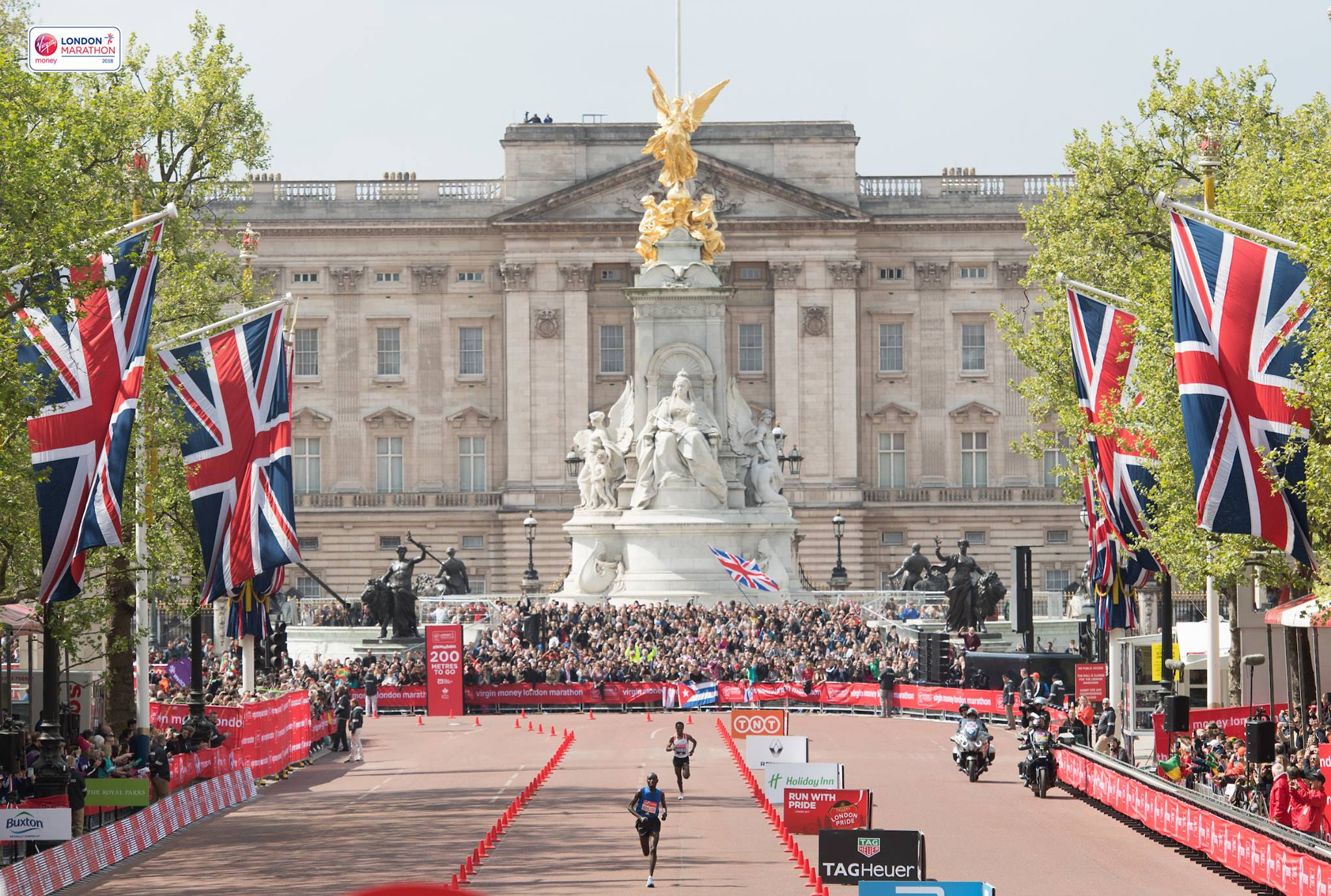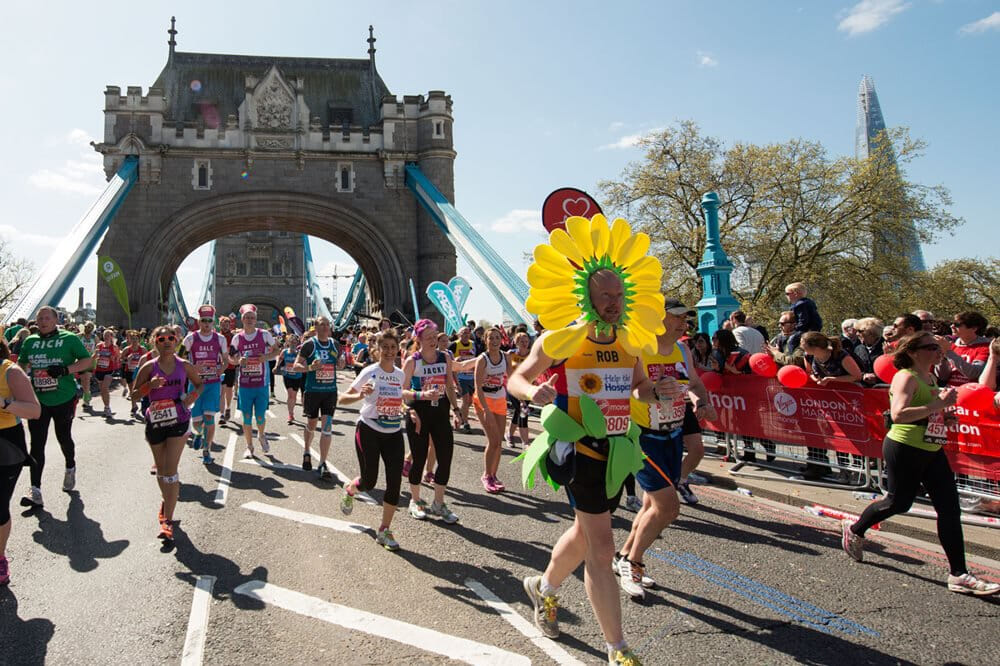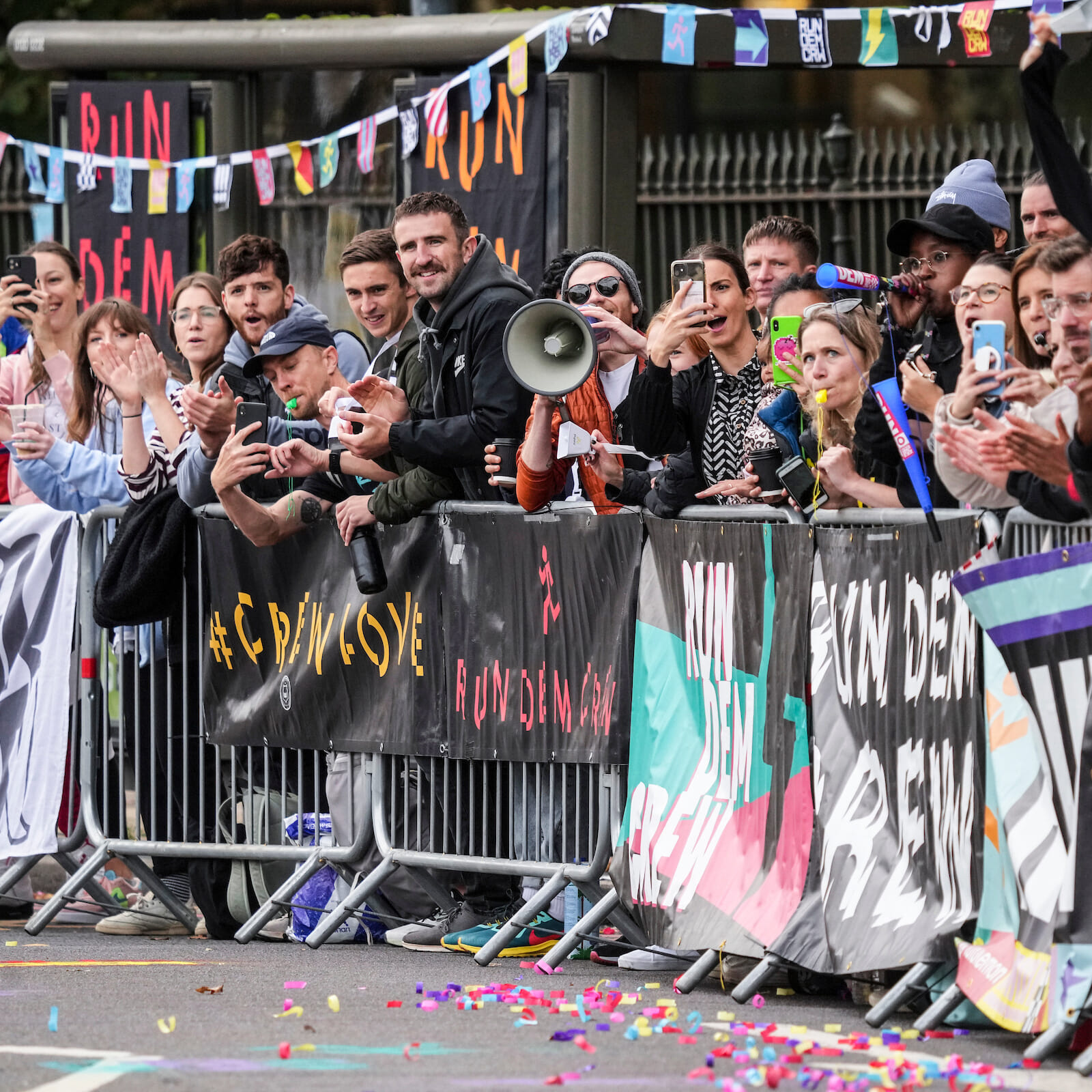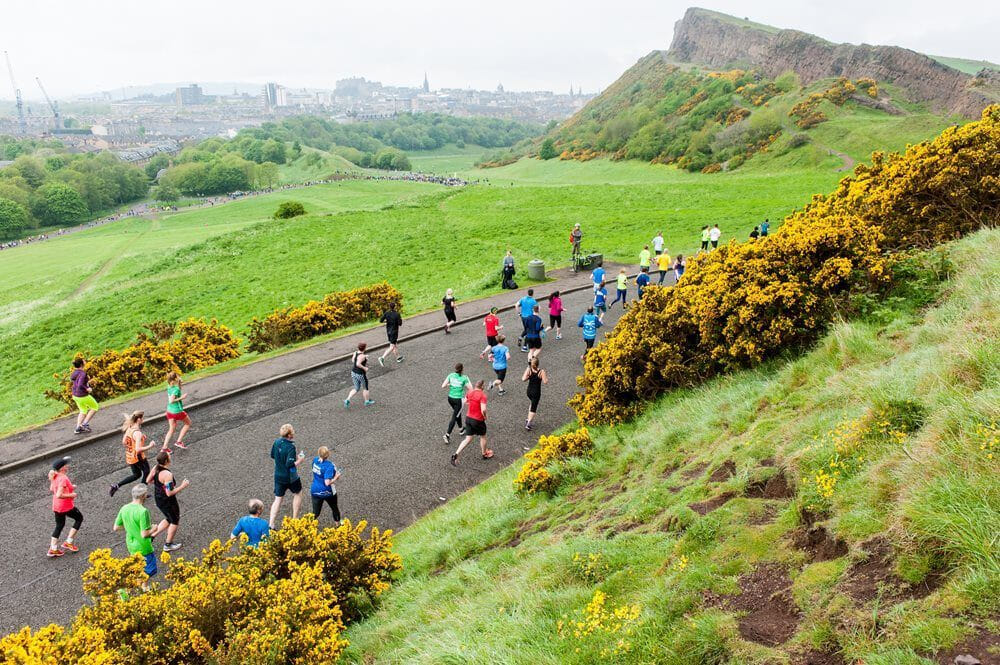TCS London Marathon | Your guide
This is the UK's biggest marathon and one of the greatest in the world - here's what you need to know!

Over the 40+ years that it has been running, the TCS London Marathon has produced some unforgettable moments. From its first edition in 1981, with only 7,747 runners, to the postponed 2020 edition due to coronavirus, the race has undergone a massive transformation and now attracts tens of thousands of runners, as well as a host of elite athletes and celebrities. Paula Radcliffe's incredible performance in 2003, Eliud Kipchoge's domination in 2019, Sir Mo Farah's high-profile performances - there's been an awful lot to admire.
The TCS London Marathon has raised hundreds of millions of pounds for charity thanks to the incredible efforts of its runners, both on the course and in their fundraising. One of the most memorable features of the race for anyone who has competed or spectated is the incredible support generated by charity cheer stations along the route, spurring runners on to the finish line.
It takes place in April - read on for a full breakdown of how the event is going to run and what there is to look forward to. If you're interested in getting involved, we've got all the information you need to make that a reality; if you're supporting someone, we've got your back as well. This is your comprehensive guide to the TCS London Marathon.
Sign me up for the London Marathon

Many runners take part in this huge event to raise money for a charity that means something to them.
Course highlights
While the finishing straight down The Mall, decked out in Union Flags and with Buckingham Palace resplendent in the background, gets all the attention, there are plenty of other highlights along the course to get excited about. Here is our pick of the greatest:
The start-line! While the background of Greenwich Park may not compare with the grandeur of later iconic landmarks, the atmosphere of nervous anticipation at the race's start, shared by tens of thousands, is so infectious that it deserves a mention in our list of highlights. At this point, racing strategies are reconsidered, last minute toilet trips are made (or at least queued for) and nervous grins are shared among strangers. There's really nothing like it.
The Cutty Sark. The first landmark that runners pass, just before the seventh mile marker, is this historic sailing ship from the 19th century. Moored in Greenwich, the Cutty Sark was famous for its rapid voyages to Asia and Australia, usually completed in record-breaking time - perhaps something for runners to take inspiration from!
Tower Bridge. Just after mile 12, runners cross the river from South to North over the iconic Tower Bridge, with the Tower of London standing directly across from them. These landmarks have been part of the fabric of the city for centuries and serve to remind everyone taking part that the route they are running is incredibly special. Besides, this is almost half-way!
Canary Wharf. The financial heart of London plays host to arguably the most congested section of running, with the route doubling back on itself multiple times between miles 15 and 20. Surrounded by soaring skyscrapers, this is often where runners can 'hit the wall' so it's either brilliant planning or great luck that this section accommodates a lot of cheering spectators.
Victoria Embankment. Although not specifically a landmark in itself, this stretch of road takes runners through the heart of London, connecting the historic Tower of London to the Houses of Parliament and Big Ben. At this point, between miles 24 and 25, runners will be both physically drained and mentally jubilant at being so close to the finish line. It's a strange mix!
The Mall. Running around the edge of St James's Park, passing Buckingham Palace on your left and arriving at the finish line to the cheers of thousands is an unforgettable experience.
There are few events around the world that can boast highlights like the TCS London Marathon, which helps to make it one of the most popular races in the UK. Fortunately, for those who are interested in taking part, there are a number of options available.
Sign me up for the London Marathon

The grandeur of Buckingham Palace and the Mall help to make this moment even more special.
How to enter
Entries to the TCS London Marathon are handed out in a variety of ways, though most people receive theirs through the general ballot. Once that has closed and the results announced, running for charity is your best option to get a place, though there are a couple of others.
Enter the ballot
The ballot for the UK's biggest marathon usually opens for the next year shortly after the race and remains open for about a week. It is free to enter and tens of thousands of people will apply.
For the April 2024 edition, the ballot result was announced in June 2023. Although most runners in the event will have gained their place in the ballot, many, many more will be left feeling disappointed and not having got in - the ballot is always oversubscribed!
Run for charity
The TCS London Marathon raises millions of pounds for charity each year and is regarded as one of the greatest charity events in the UK, with thousands of runners taking to the capital's streets in fancy dress and branded running vests. Charities set up cheer stations along the route, creating a cacophony of applause and cheers to help motivate their runners.
We've explained how to run for charity in a detailed guide but in simple terms you find a charity that you want to support, apply to run as part of their team and commit to raising a minimum amount of fundraising in return for your place. There will also be an entry fee to pay in most cases. If your application is accepted (while most are, it's not guaranteed as charities only have limited places) then you will gain a raft of benefits alongside your entry.
These benefits usually include:
- A branded running vest to wear during the marathon, showing your support for that charity.
- Training advice to help you prepare for the run.
- Fundraising advice and materials to help you reach your minimum target.
- A cheer station along the route to hear people shouting your name for support.
- Access to exclusive social groups with your fellow runners and point of contact within the charity.
- An invitation to an exclusive post-race reception, often including a free massage for those tired legs!
More ways to enter
Most runners in London will have entered through the ballot or by running for charity, but there are a couple of other ways to join:
- 'Good for age' places. If you have run a particularly fast time in the past year, you may qualify for a 'good for age' place. For example, for women aged between 40-44, a sub 03:50:00 time would earn them a place in the TCS London Marathon, so long as the time was achieved in the qualifying period leading up to the event.
Championship entries. Runners who are registered with a British Athletics-affiliated club and have achieved a qualifying time in the year leading up to the event can claim a championship entry, allowing them to take a pole position in the race.
Sign me up for the London Marathon

Thousands of people line up along the course to support people taking part.
How to spectate
London's streets drum to the sound of pounding feet on marathon day, though as many of those - if not more - are from the family and friends of runners, as well as general spectators. Navigating through crowds of thousands has its challenges, so planning your day is essential. This is our guide to watching the TCS London Marathon, based on years of experience!
Know your runner. Most spectators will be supporting someone in the race, so the first thing you need to know is how fast they are and when you can expect to see them at different points in race! There's no point hanging around at the Cutty Sark if they've raced ahead to Tower Bridge already.
Plan your route. Once you've got a rough idea of their speed (which will likely be slower thanks to the crowds) plan to see them at three or four different points in the race. To help with their motivation, try to space these points out along the route so they can see a familiar face when they need it!
Be strategic. Moving across London is a nightmare on marathon day as the Tube is crammed and road closures mean that taxis are difficult to access. To avoid racing around, pick points on the route that give you more options - basing yourself close to halfway mark at Shadwell, for example, allows you to see them at both mile 13 and mile 22, returning on the other side of the road. Similarly, at Westferry the markers for miles 15 and 20 are remarkably close together.
Get to the finish. No runner wants to finish a 26.2-mile race and have to wait for their spare clothes because their family didn't arrive in time. Above all else, make sure you are at the finish line when your runner crosses the line so you can greet them and help them recover!
Plan your exit. Unless you live in London, getting out of the city is going to be your next challenge, particularly when public transport is heaving and you have a runner hobbling along in flip flops behind you. To make your life earlier, find somewhere relatively close to the finish to sit down and get some food - being in central London, this shouldn't be too tricky! Once the crowds have died down a bit, you can head home.
Sign me up for the London Marathon

Events to help you train
Whether this is your first marathon or your fifth, running 26.2 miles is no easy feat. You'll need to train for weeks and months in advance, ideally with a mix of running and cross-training to help you avoid injury and move more efficiently.
One of the best tactics, though, is to enter other events.
Scheduling a half marathon, 10-mile run or 10K into your training plan is one of the best ways to upgrade your preparation. By committing to an event, you provide a structure for your training that will help to keep you on track and accountable.
What's more, the race day experience will help you to prepare for running among a huge crowd of people for when the main event rolls around. You also get a chance to test your race nutrition strategy and any kit that you're planning on wearing in London.
These are some of the best runs out there to help you prepare for the TCS London Marathon!

10K runs
If you're running your first marathon, a 10K (6.2 miles) run may be one of the first events that you enter as part of your preparation, so picking the right event is important.
Cancer Research UK London Winter Run
This is one of the biggest and most popular 10K runs in the capital, running on many of the same roads that the marathon uses and exploring London's iconic and historic landmarks. It's also held about two months before the marathon, so it's a great opportunity to practise running on closed roads in London!
Brighton and Hove 10K
Held just two weeks before the TCS London Marathon, this is a golden opportunity to experience a major race atmosphere if you haven't before, as well as enjoying an event that is comparable to London in its scale. You can run the 10K and then enjoy watching the marathon runners!

Half marathons
There are very few races that clock in between a half and full marathon, so these events are often the best way to prepare for the full distance - just bear in mind at the finish line that you'd need to run it all again!
TTP Cambridge Half Marathon
Exploring both beautiful Cambridgeshire countryside and the historic streets of this university city, the popular TTP Cambridge Half Marathon is an ideal event for your London Marathon preparation. It takes place on Sunday 3 March, so you'll be in full preparation mode for the main event!
London Landmarks Half Marathon
Hopefully you'll be feeling ready to run the full marathon distance by this point but if you want to experience a major event in London before the marathon, this is your best bet. This hugely popular half marathon takes place just two weeks beforehand and will help you to understand what the atmosphere and logistics will be like on race day.

Alternative marathons
We've just spent a whole article espousing the benefits of running the TCS London Marathon, so we're not about to change our tune now - it's one of the most unforgettable race experiences you can hope for!
What if you don't get a place, though?
Well, naturally you'll re-enter the ballot for the following year and start researching which charities you might want to run for. What you can also do, though, is have a look at some fantastic alternatives to the TCS London Marathon.
Incredible as it is, London is far from the only place in the UK with a major marathon and some of its biggest competitors are hugely popular. Here's some of the best!
Edinburgh Marathon
The major event in the Edinburgh Marathon Festival (though supported by many more) this is one of the biggest runs in Scotland and draws 35,000 to Edinburgh each year! Starting in the city's historic streets, the route ventures along the East Lothian coast and culminates at Musselburgh and a bustling event village.
Yorkshire Marathon
Popular from the off-set, this 26.2-mile gem keeps getting better! Exploring both the city of York and the surrounding countryside, this diverse route enjoys great support from crowds of spectators and has an inclusive atmosphere that's perfect for runners of all ages and abilities.
adidas Manchester Marathon
Regarded as the UK's flattest and friendliest marathon, Manchester is a hugely popular event that provides some serious PB potential for experienced runners. It's held just a week or so before London and has a wide range of charities offering places in return for fundraising, as well as some of the best crowd support you can hope to find.
Schneider Electric Paris Marathon
If a major marathon in a capital city is what you're after, hop on the Eurostar and head to the second largest marathon in the world! The flat course in this run makes it ideal for experienced and beginner runners alike, plus you get to explore one of the most beautiful cities on Earth. Many runners head to Paris for the full weekend, too.
Richmond RUNFEST Marathon
This 26.2-mile run visits a completely different part of the capital to the TCS London Marathon and is centred around a family-friendly music and food festival, hosting a series of races, of which the marathon is the main event. Expect a great atmosphere and some scenic running along the Thames tow path.